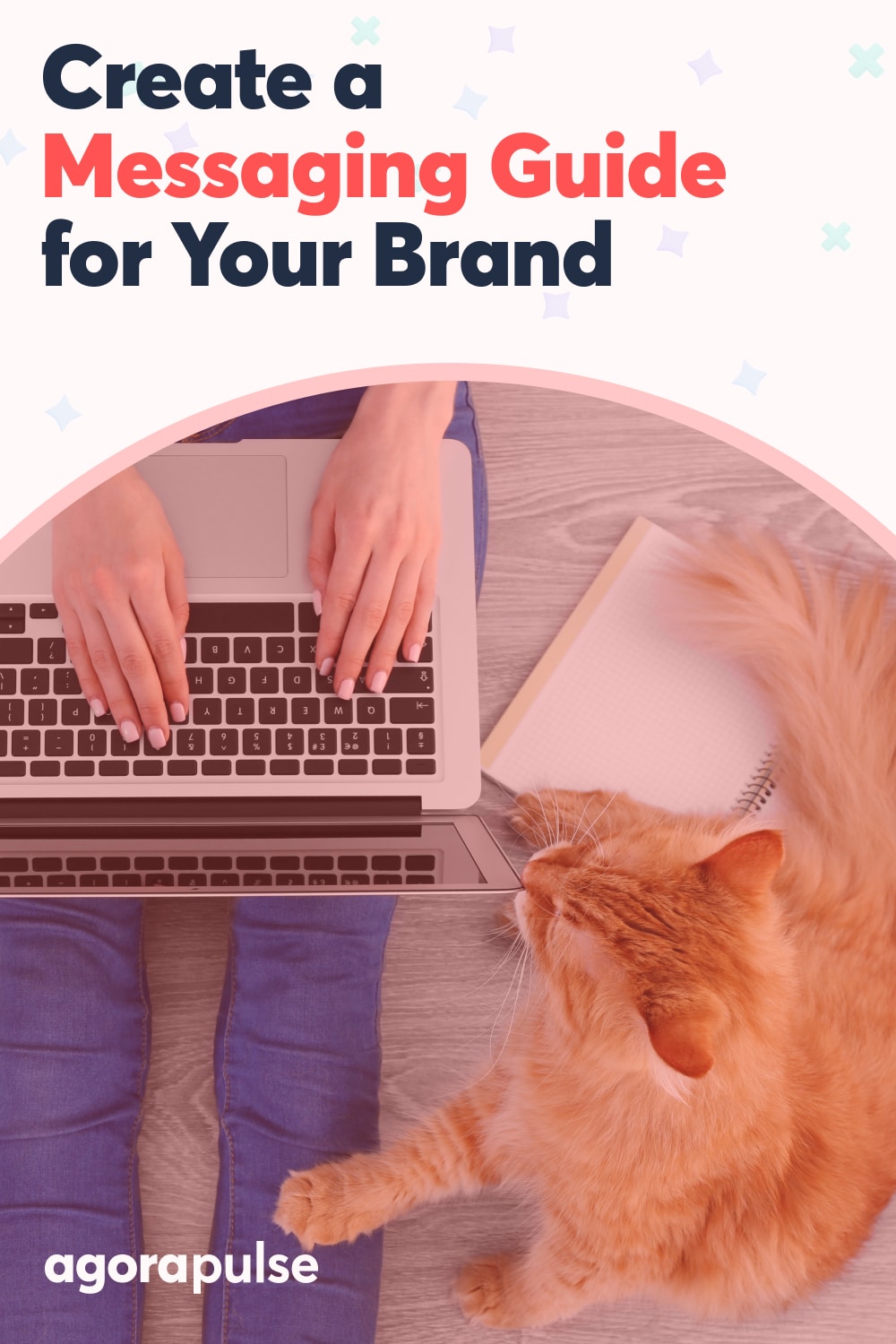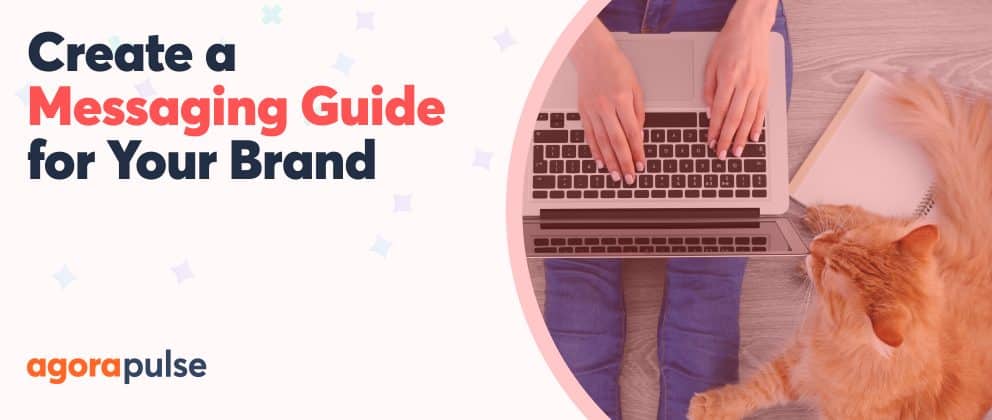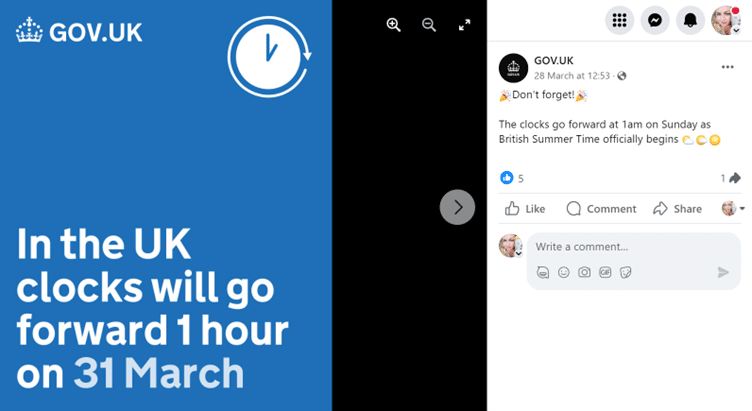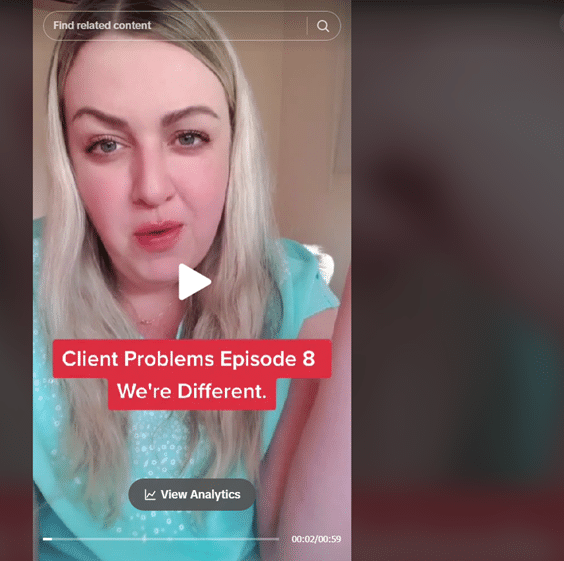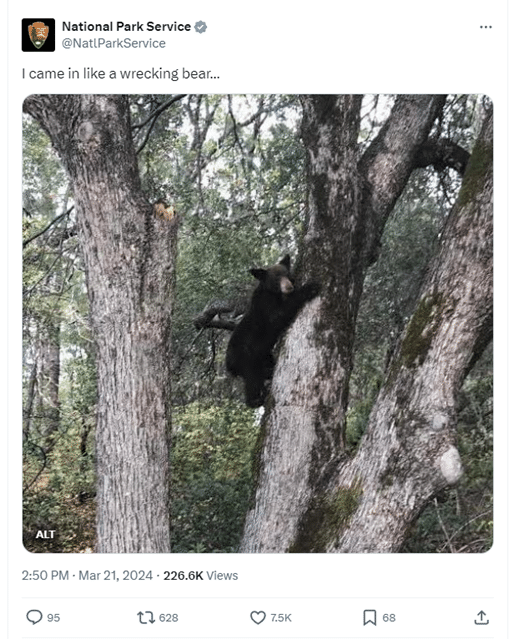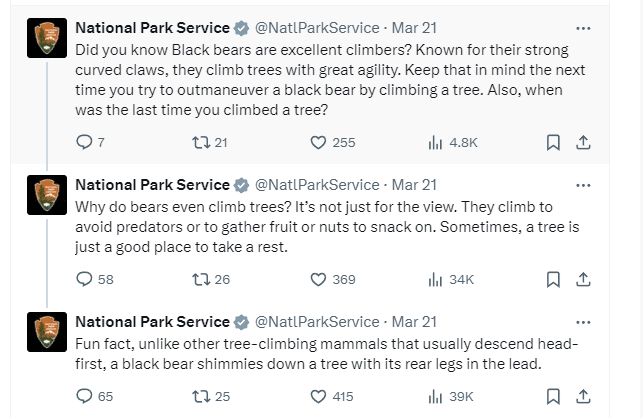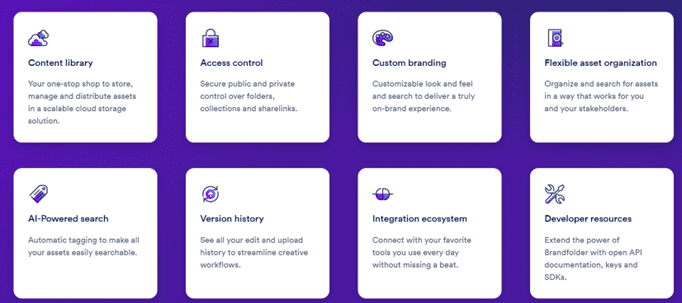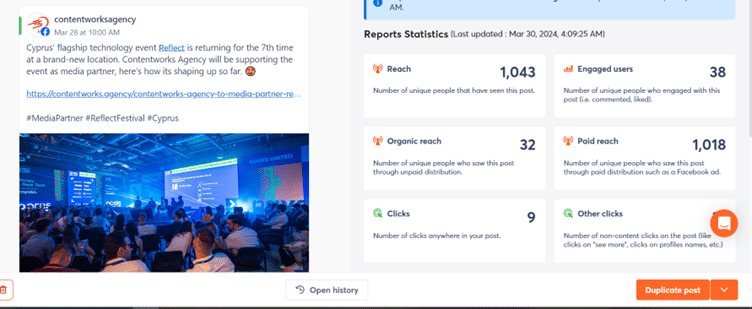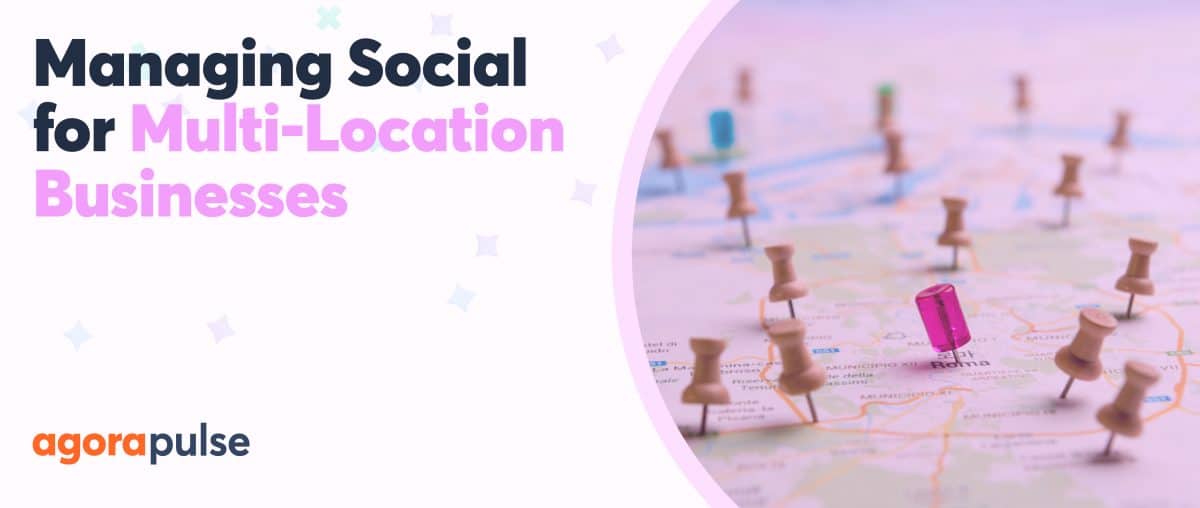If you’ve been following a brand for a long time, you’ll start to feel a connection with their articles and posts. Whether it’s those roasting snarky tweets from Wendy’s, or the family-friendly positivity of Coca Cola, you’ll recognize the content as belonging to that brand. And that doesn’t happen by accident. Successful brands create and utilize brand messaging guides to provide direction for their employees, affiliates, media partners, advertisers and agencies.
If you don’t have an existing messaging guide or need help getting one created, read on. You can also sign up for a free trial of Agorapulse and see how our inbox assistant and collaboration tools can keep your messaging on brand.
What Is a Brand Messaging Guide?
A messaging guide incorporates your brand’s positioning, target audiences, value propositions, key messages, and tone of voice. It helps you determine what to say and how to specific segments of your audience as well as a general audience.
Why You Need a Brand Messaging Guide
With so many brands online and posting, you need to differentiate yours from everyone else. It’s also key to building a connection with your audience.
1. Consistency
A study by Lucidpress reported that consistent brand presentation across all platforms can increase revenue by up to 23%.
When customers encounter a consistent brand experience, it creates a sense of trust, warmth, and familiarity, which lead to more purchases.
Example of a brand messaging guide in action
Take this example from my fave language learning app Duolingo. When I slack off from learning Greek (which is often), that little green bird swoops in with some attitude. Duolingo utilizes its green mascot to consistently deliver on-brand messaging that keeps fans loyal and coming back for more. There are also a ton of memes dedicated to Duolingo’s messaging threats.
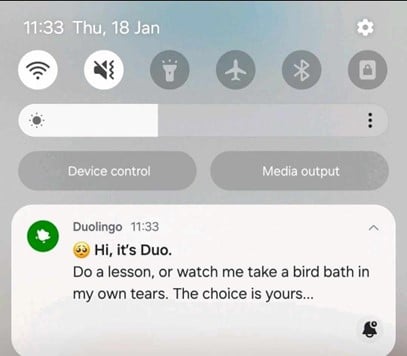
Example of how Duolingo stays in within its brand messaging guide
Tip: If you use Agorapulse, you can use the publishing features to make sure collaborating and communicating easily regarding what to schedule or post.
2. Clarity
A key point to note about a brand messaging guide is that it provides clarity by defining the brand’s positioning, values, and key messages. It ensures that all communications are aligned with the brand’s identity and objectives, which in turn makes it easier for audiences to understand the brand and its messaging.
You might not think a messaging guide is so important if you run a small business yourself. But consider organizations like governments who need to communicate in a crisis. You want to be able to instantly convey critical messages with all internal departments aligned to the same style.
Tip: If you’re an Agorapulse user, you also can keep on top of your inbox and also do use our listening feature to get information about a potential social media storm.
Example of the need for clarity in a messaging guide
GOV.UK utilizes clear, simple language accompanied by strong, explanatory graphics to convey messages. They must factor in 67 million citizens who may potentially engage with their posts. Their brand messaging guide would likely specify simple, straight to the point, trustworthy, and easy to understand.
3. Brand Differentiation
You may have heard the term infobesity. It summarizes how we are living in a time when there are millions of messages, brands, CTAs and images hitting us every day. In a competitive market, having a distinct voice differentiates you from competitors. And sometimes that means a rebrand.
A classic example of learning to stand out as a brand
Old Spice used to be an old fashioned dad/granddad brand. (In the UK, it was a little bit of a joke.) But it was rebranded in 2010 to be humorous, often exaggerating masculinity in a hilarious way.
Check out this oldie but goodie video, which appeals to a younger audience and includes women who are likely to be the ones purchasing the product for their partner!
4. Streamline and Save Time
A brand messaging guide saves a ton of time because it aligns your internal and external teams.
Take the saved replies in the Agorapulse dashboard. These could be written and approved by your marketing and compliance team and then just copied by your social media manager. You can have as many as you want and create different sets for each brand you manage. This streamlines the content creation process and reduces the need for constant approval requests or revisions.
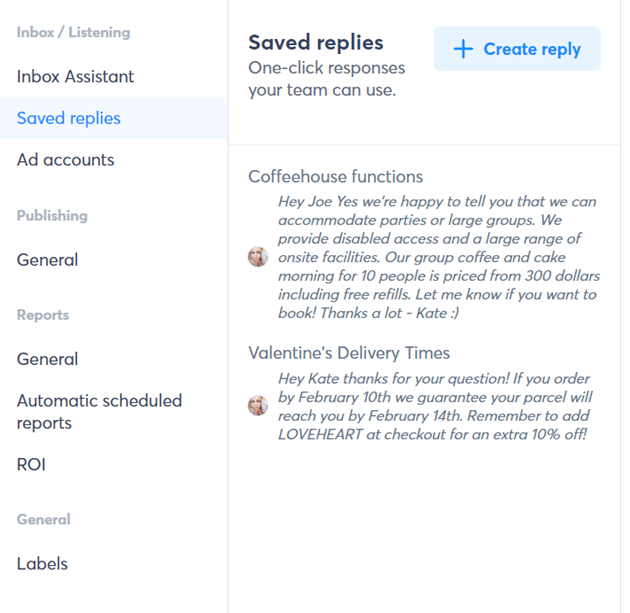
Saved replies can be an easy way to make sure your replies stay within the brand messaging guidelines.
How to Write a Brand Messaging Guide
Creating a messaging guide for your brand is key to maintaining consistency and clarity in your communication efforts. So, what should go into a messaging guide and what shouldn’t? At Contentworks Agency, we create messaging guides for our clients within the finance, tech, and corporate spaces. Here’s what goes into a basic messaging guide.
1. Define your brand identity
True story: We start with this segment when working with clients and often find they don’t actually know who they are as a brand. The answer “we’re different” isn’t good enough because all brands say that!
2. Research, research, research
Before leaping into a messaging guide, you should conduct some market research. This will help you to gain insights into your target audience’s preferences, pain points, and communication channels. Your research should also factor in your competitors, cultural points on your target countries, and the type of messaging that resonates with your audience. Document the key points, as these will help to shape your messaging guide.
True story: I once worked in marketing for a brand that would run very large events in China. The bosses got together (without marketing) and decided they would order luxury clocks as gifts for their VIP Chinese guests. They did not research the cultural implications of doing this. Clocks are the symbol of time running out, which is why they are often viewed as a rude gift, especially if given to seniors. The word is also very similar to the word for attending a funeral ritual. It is a big no in Chinese culture to gift someone a watch or clock.
3. Get the basics right
Your brand voice should clearly define the following right at the start.
- Your brand’s mission, vision, and values condensed.
- Your target audience and their needs. Again, condensed. It should be easy to read and quick to digest.
- Buyer personas to represent different segments of your target audience. This isn’t always necessary but for large organizations, brands with numerous products, and target countries it may be.
4. Establish tone of voice guidelines (TOV)
This is the good part. You’ve done your research, identified your buyer personas, and nailed down your brand mission. So, it’s time to start shaping your TOV. This is often a working progress, as it needs to be adaptable for written, spoken, and visual mediums. If you already have design guidelines, it can be helpful to include these in the discussion to avoid a disconnect between content and images.
- Define your brand’s voice but don’t be boring! Lots of brands will choose the obvious ones, like friendly, professional, or funny. But there are many more characteristics out there that can be worked into a TOV. For example, Trustworthy, Honest, Quirky, Empathetic, Curious, Innovative, Wild, Spontaneous and many more. And below these can be a whole other level of character and brand voice possibilities.
- Determine the appropriate tone variations for different situations. For example, how you will respond to being tagged in a funny post versus being tagged in a complaint. Write out your responses to see how they sound and whether they will work across different verticals.
- Document examples for maintaining your TOV. These should be simple and clearly documented, so anyone working with your brand can quickly align.
Example: As we just discussed, your brand voice can be multi-layered. One of my favorite brands for this is National Park Service. The brand mixes insightful information, with sarcasm and humor to capture audience attention. Often, they will combine it all in one thread, as you can see below.
5. Develop key messaging templates
Creating messaging templates doesn’t mean everyone should copy them directly like robots. Instead, they provide a framework to guide anyone representing your brand in the future. Remember, as your brand grows, you may be working with agencies, contractors, employees in other countries, and affiliates. This framework will help them to know how to engage on your behalf.
- Outline key messages that apply to your product features, benefits, and unique selling propositions.
- Develop saved replies and responses that your social media team or agency can utilize.
- Clearly define spelling, grammar, and layout. Are you US English or UK English? How will you write times and dates? Will you use an Oxford comma? (Hint: yes!)
6. Define your channels
At the start, it’s a good idea to think about how you want to message your employees, partners, stakeholders, fans, potential customers, and confirmed customers. And I’m not talking TOV, I’m talking channels. You can define which channels you will and won’t use, including:
- Video Conferencing like Zoom, Skype or Google Meet.
- Email, which can be funneled for different users.
- Instant Messaging like Messenger, Whatsapp, Viber, Slack, or Signal.
- Social Media platforms like Facebook, Twitter, Instagram, TikTok, LinkedIn, and Snapchat
- SMS for messaging your audience direct to their mobiles.
- Printed Materials like brochures, flyers, newsletters, and posters.
7. Get stakeholder buy-in
Before you go ahead and distribute your messaging guide, ensure you have complete stakeholder approval and buy in. Company founders and directors must fully understand and agree with the direction, otherwise expect roadblocks later. That said, don’t invite everyone’s opinion, or you will never get anything agreed!
- Educate internal stakeholders, including employees and partners, on the importance of consistent messaging.
- Conduct internal training sessions to familiarize team members with the messaging guide and how to apply it in their respective roles. Be sure to include all relevant departments.
- Regularly review your messaging guide to reflect changes in your brand, audience, or market conditions. Big changes may require design rebrands, TOV updates, and strategy realignment.
Helpful Tools for Creating a Brand Messaging Guide
SurveyMonkey: Facilitates market research and audience surveys to gather insights for refining brand messaging. This is not a free tool, but it’s worth spending €30- €75 a month (at least, at first) to get your research done.
Google Forms: Select from multiple question types, drag-and-drop to reorder questions, and customize values as easily as pasting a list. Google Forms is free and allows you to customize colors, branding, questions, and content.
Brandfolder: This platform helps to organize brand assets and guidelines, including messaging, tone, and voice. It’s a pretty cool tool but (and it’s a big but) it comes in at $1600+ per month, so not ideal for startups.
Agorapulse: If you need a tool for creation, scheduling, monitoring and reporting of your social media, it’s Agorapulse. The platform allows you to create saved replies, store your branded visuals, assign content for approval, and monitor your content and its interactions in real time. You can set permissions for different team members to access social media accounts, therefore aligning and ensuring consistency. And see what’s working and what isn’t. This ongoing monitoring can help to refine your messaging.
The social media management tool can help with making sure everyone at your company is following the brand messaging guidelines. For example, with Agorapulse, you can:
- Use saved replies that are written with the right messaging. You won’t have to continually write and do approvals for every reply.
- Schedule content that has met the brand messaging guidelines.
- Form an approval process to make sure that all new content follows the guidelines.
- Publish on different social media platforms at once rather than cause potential issues and mistakes from going natively in each platform.
- Tailor your social media content perfectly to meet your guidelines.
Sign up for a free trial to see more.
Trello: This is a nice platform for collaboration. You can create boards, lists, and cards, which can help to project manage the production and rollout of your messaging guide.
Canva: Ideally, you will have your final messaging guide professionally designed. It should be very visual, clearly laid out, and on-brand in terms of colors and designs. For smaller businesses and startups, Canva Pro is a great solution. It offers templates and design tools for creating visually appealing brand messaging documents. Then it can be used for social media graphics, presentations, and videos.
Fun fact: Agorapulse has a Canva integration to make it even easier.
In Conclusion
How long should your messaging guide be? There is no right or wrong answer here. We have delivered messaging guides that are 5 pages long and messaging guides that are 50 pages long. It depends on the company size, sector, products and depth of research undertaken. But one thing’s for sure: Your messaging guide should be easy to read and adapt for marketing actionables. It should be a workable document, not a lengthy theoretical essay.
